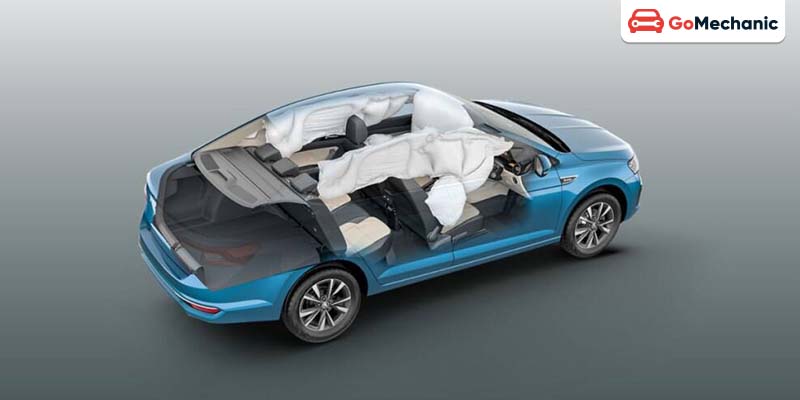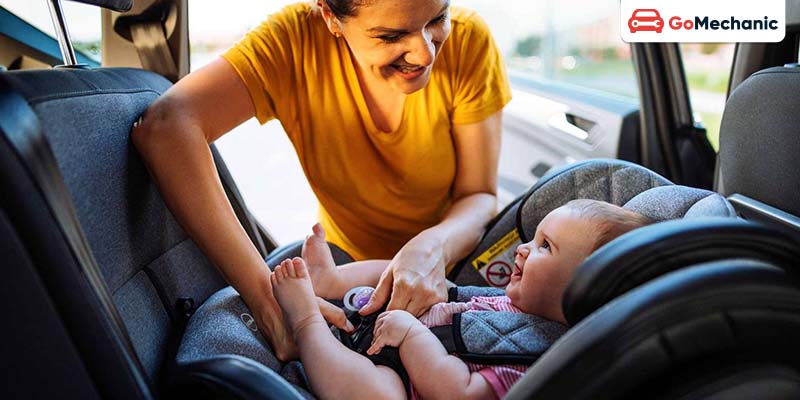You’re going to have one big, time-consuming decision when it comes to choosing the right and safe car for your family. What follows is a giant guide on how to choose correctly.
1. Research Safety Ratings
This will form the base of your decisions between used and new car choices.
- Crash Test Ratings: Organizations such as the National Highway Traffic Safety Administration and the Insurance Institute for Highway Safety independently do such ratings. Ensure good ratings on all types of crash test ratings, either frontal, side, or rollover.
- Top Safety Picks: Make sure that it is rated as either IIHS’ Top Safety Pick or Top Safety Pick+. IIHS holds the former rating to mean ‘good’ and the latter as ‘best’ when it comes to safety.
2. Look for Following Safety Features

- Airbags: More, the merrier. It shall contain the front, side, curtain, and knee type.
- Anti-Lock Braking System: This system prevents the wheels from locking at the time of braking, and in all respects, steering control will always be in the hands of the driver.
- Electronic Stability Control (ESC): Hence, in scenarios where the vehicle is getting ready for a skid or slip out of control while making sharp turns or traversing slippery surfaces, this feature helps in automatically controlling it.
- Traction Control: Prevents the spinning of wheels at the point of acceleration on a slick or slippery surface.
3. ADAS (Advanced Driver Assistance Systems)
- Automatic Emergency Braking: It detects impending disasters and engages the brakes automatically in case proper action isn’t executed at the instant.
- Blind Spot Monitoring: Lets you know when there is a vehicle in your blind spot. This is therefore indicative of probable danger in case of a lane shift/change.
- Lane Departure Warning/Lane Keep Assist: The system will warn to signal the driver so that the vehicle should be run out of the lane. It may also work by correcting steering and returning into the lane.
- Adaptive Cruise Control: This feature increases or decreases the speed automatically and at the same time, follows a safe distance from the vehicle running ahead of you.
4. Dimension and Body Structure
The key thing is that the greater vehicles—the SUVs and minivans—did well in crash tests, hence posing a better protection of the occupants in case of impact. A car today has crumple zones that absorb energy during an impact in case the automobile has met with a collision, hence saving its occupants from various shocks.
- Side Impact Protection: Check if the vehicle is equipped with metal side panels on both sides of the vehicle body, and with reinforced door beams for protection from side impact.
5. Child Safety

- LATCH System: In case the vehicle also has a LATCH system, this will enable safe and easy installation of a child seat.
- Rear Door Child Safety Locks: These locks stop your children from opening a door from the inside.
- Rear Seat Reminder: This is what reminds one to check the back seat of the car before leaving the vehicle; otherwise, it will ensure you never forget your child in the car.
6. Visibility and Lighting
- Good All-Around Visibility: Get a car that has a good all-around view; big windows and perfectly positioned mirrors clearly make blind spots smaller.
- Adaptive Headlights: These adjust the direction and size of the beam, based on your vehicle speed and steering angle. Thus, you will see much more while driving straight or cornering during night drives.
- Daytime Running Lights: Because this feature makes your vehicle more visible to others during daylight it can reduce the severity of an injury from a possible crash. This is how DRLs work.
7. Check for Recalls
- Open Recalls: Find out whether there has been an open recall on your car make and model. All information on recall is available at the NHTSA website.
- Recall Fixes: If the used car, at any point in time, was part of any recall, make sure the vehicle got the fix for that defect.
8. Reliability and Maintenance
- Brands Known for Reliability: Get to know what brands have built reputations for reliability and great performance when it comes to the manufacture of good quality products. A car is certified to be reliable since the cases of mechanical faults are fewer, which could probably violate the criteria of safety.
- Maintenance History: In case of a used car, the maintenance history of the vehicle has to be checked so that the vehicle is perfectly maintained.
9. Take a Test Drive

- Comfort and Control: One should feel comfortable driving the car; the car should be easy to control. No doubts should creep into the mind about the perfection of brakes, steering, and accelerator.
- Check Features: All those features that pertain to safety must be well-checked.
10. Read Reviews and Seek Advice
- Consumer Reviews: You can very well get an idea about the car’s performance and safety when the car is in real life, after passing through the reviews written by other owners.
- Expert Reviews: Yet another aspect is the reviews conferred on and the ratings given by publications or websites dealing in automobiles.
Now that this fact is kept in mind, you will be more careful about choosing an automobile that keeps you and your family safe on the road.





